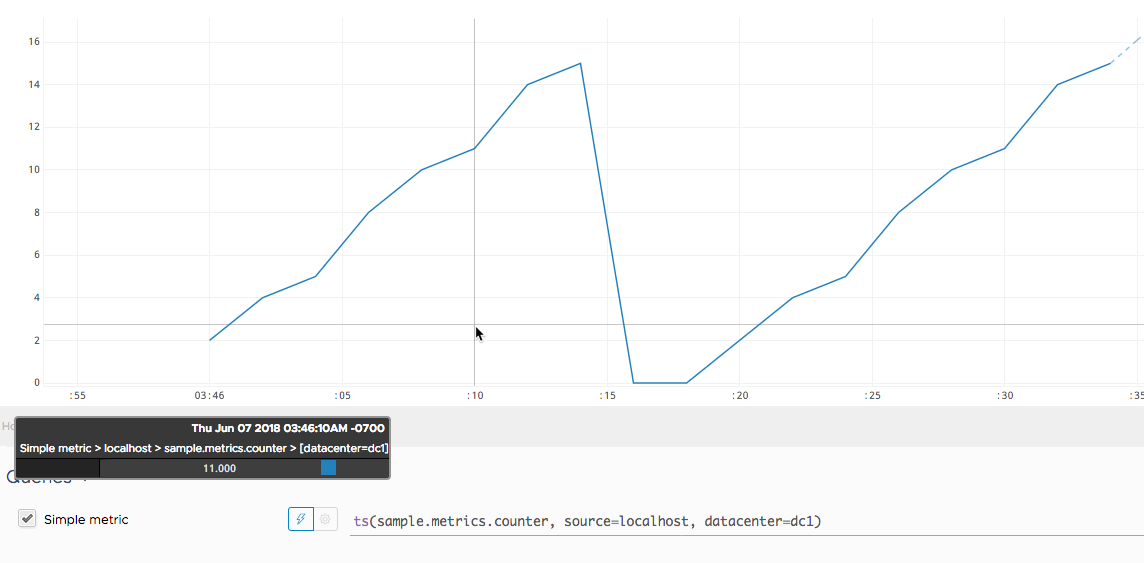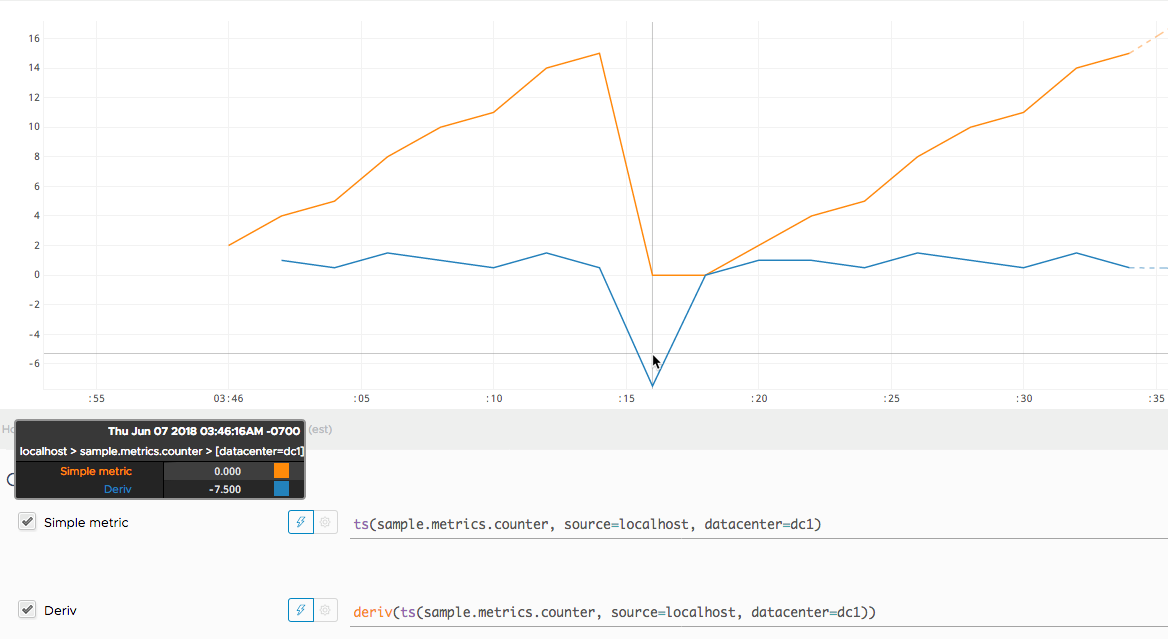Summary
deriv(<tsExpression>)
Returns the per-second rate of change for each time series described by the tsExpression. The results can include both positive and negative rates of change. Use rate() if you want to see only positive rates of change.
Parameters
| Parameter | Description |
|---|---|
| tsExpression | Expression that describes the time series to return rates of change for. |
Description
The deriv() standard time function returns the rate of change (per second) between adjacent data values in the time series described by the expression. deriv() returns a separate series of results for each time series described by the expression.
You can apply deriv() to any kind of metric. If you are primarily interested in the rates of change of counter metrics, however, you will get more useful results from rate(), which ignores negative rates of change.
Rate of Change
deriv() finds the per-second rate of change between pairs of adjacent (successively reported) data values.
The rate of change between a pair of data values is computed as follows:
- Subtract the earlier data value from the later value.
- Divide the difference by the number of seconds in the reporting interval.
For example, let’s say that a metric has a reporting interval of 30 seconds, and reports successive data values:
| Value | Time |
| 105,500 | 05:45:00pm |
| 105,750 | 05:45:30pm |
The deriv() function computes the rate of change between these data values using the following formula: (105,750 - 105,500)/30. The resulting positive value (8.333) is returned at 05:45:30pm, indicating that the metric increased by 8.333 per second between the two values.
Notice that the per-second rate of change between the same two data values would be quite different if the metric had reported them two minutes (120 seconds) apart: (105,750 - 105,500)/120. In this case, the returned per-second rate would be 2.083.
Now let’s say the above metric reports a later value that is less than the earlier value:
| Value | Time |
| 105,750 | 05:45:30pm |
| 105,250 | 05:46:00pm |
The deriv() function computes the rate of change between these data values using the following formula: (105,250 - 105,750)/30. The resulting negative value (-16.666) is returned at 05:46:00pm, indicating that the metric decreased by 16.666 per second between the two values. (In contrast, rate() simply produces a gap in this case, rather than reporting a negative rate of change.)
Examples
Here’s a query that shows a sample metric that increments a counter. The reporting interval is 2 seconds, which means the counter increments every 2 seconds. We see the count climb from 3:46:00 to 3:46:16, when it resets to 0. The counter restarts at 3:46:20.

Now we apply deriv() to our original query to find out how fast the counter grows per second. Notice:
deriv()starts reporting at the counter’s second value.- At 3:46:10, the rate of growth is .500, indicating the total has grown half a unit per second since the preceding value.
- A negative rate is reported when the counter falls to 0.
